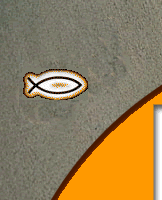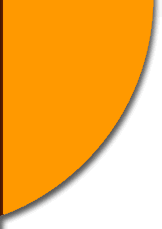| Note:
Some Links may be out of date.
Blitz
Ezine # 224 September 2, 2003
Advanced SEO - Five Key Elements
Note:
This is an archived issue. Some links and/or content
may be outdated
The Blitz-Promotions News Letter
Issue no. 224, September 2, 2003
************
In This Issue **************
Comments
Food for thought
Articles
The Classifieds
Next Issues
++++++++++++++++++++++++++++++++
Blitz Comments
++++++++++++++++++++++++++++++++
We
hope everyone had a great holiday weekend. Yesterday
I worked but it was outside... so quite a change. We
did have a chance to watch some football with friends
and family and even though our team lost, we had a wonderful
time.
This
issue starts a six part (could be more) series of on
advanced search engine optimization techniques. Here
is the outline for the issues.
1.
Five things to make sure you have on your site.
2. Advanced keywords - part 1.
3. Advanced keywords - part 1.
4.Finding your competition.
5. Dissecting the competition.
6. Density.
+++++++++++++++++
Food for thought
+++++++++++++++++
When
people are more important than profits, everyone profits.
+++++++++++++++++++
Advanced SEO Techniques.
Five things you need to make sure you have.
+++++++++++++++++++
If
you haven't taken our free courses on link building
and search engine optimization, make sure that you do.
You can find more information by clicking on the links
below.
http://www.blitzpromotions.com/ses.htm
http://www.ineedlinks.com/freelinks.htm
1.
Site Map
Create
a sitemap with all the links of your site. Make these
links as descriptive as possible, please see below for
more information on doing that. Add your site map link
to every page on your site.
2.
Focus of the main page.
Optimize
your main page of your site for your three toughest
keywords. Your index page will most likely have the
highest page rank (pr) on your site so we want to take
advantage of that.
3.
Links to your main page.
Make
sure every page of your site links back to the home
or index page. It is much better to use a descriptive
link than to use just a home link. Text links are also
best. So for example if your toughests keyword is widgets
- you could use a link like - Widgets Home - or something
similar.
4.
Focus words.
Each
page of your site should be built around only 2 or 3
focus words. If you use more than that you will dilute
things.
5.
Checklist for each page.
a) Make sure the focus words are listed in your meta
tag title.
b) Make sure that you have this words prominently (using
an H1 tag) near the top of the page.
c) We'll be talking about density later, but for now
make sure to include the keywords several times in the
text - if you're working on keyword combinations (ie
widget gifts) make sure to keep those together as much
as possible - a few times on the page bold those keywords
- make sure the focus words are at least once in the
first paragraph (preferably the first sentence) - once
in the last paragraph of the page - preferabbly the
last paragraph.
d) Your navigation links should include at least one
of the keywords in them.
You
have a page dedicated to blue widget gifts / blue personalized
widget gifts. Your link page in your navigation bar
should be at the least blue widget gifts, but preferabbly
blue personalized widget gifts.
Bonus
- Add a page a week to your site. This can be articles
about your products, new products, how to guides for
using your products etc. Optimize the page for the main
keywords on that page. Add a link to your pages and
don't forget to add it to your site map. By the end
of the year you'll have 52 more pages - if you just
get a hit a day for each thats more than 360 hits a
week, 1500 a month, 18000 a year. If your conversion
rate for those page is just 0.5% you've just made 90
more sales.
+++++++++++++++++
Links you can use -
+++++++++++++++++
College
football scores without a million ads.
http://www.sportingnews.com/cfootball/scoreboard/
+++++++++++++++++
Copy Fixes--8 Quick Changes that Improve the Way Your
Web Copy Sells
By Kevin Nunley
http://www.drnunley.com
+++++++++++++++++
When
something isn't selling online, people automatically
start assuming things like, "Internet businesses never
make any money," or, "My product/service just isn't
in-demand." What I tell people when they come to me
with these statements is that there are numerous reasons
why their product/service might not be selling, and
that they should explore other options. For instance,
have they taken a good look at their web copy lately?
Most
of the time, the people I talk to about their web businesses
are selling a good product or service that people would
want to buy. What stands in their way is often their
web copy, or lack thereof.
I
often hear people say, "Nobody reads on the Internet,
so my copy just isn't that important." I want to amend
that claim to this: Many people don't read on the Internet,
but those who are looking to purchase a product or service
always do.
In
today's rocky economy, people aren't willing to throw
money at a product/service they know nothing about.
Many online shoppers spend hours looking for the item
that is exactly what they want. Your product/service
could be exactly what they're looking for, but with
scant, uninformative copy, how are they going to know?
So
it's time to make a few changes, nothing too painful.
You don't have to throw out your old copy and start
from scratch. With some minor alterations, your copy
can inform, motivate and charge prospects to take action
and buy.
Here
are a few changes you can make to change the way your
copy sells:
Give
the Most Important Info First -- Don't force people
to wade through two pages of copy before they can discover
what you're all about. Get to the point right up front,
in the headline, subheading, and first few paragraphs.
If you have too much filler copy in the beginning and
don't start getting to the point until later, all that
copy your visitors read will be lost on them. It will
have been out of context because you didn't provide
them with a context.
First
Things First -- Ever heard of "Inverted Pyramid Style"
writing? It means starting with the most important sentence
and following with lesser sentences. But not too many.
Keep your paragraphs short so they don't overwhelm the
reader.
Cut
Words -- Web copy should use about half the word count
or less than conventional writing, so keep it short
and too the point. This isn't the great American novel.
Your goal is to make sure your audience can understand
every word you say while reading quickly. If they have
to stop to get a dictionary because you used too many
cryptic words or jargon, you'll lose their interest.
No
Sub Par Subheadings -- Use only meaningful subheadings.
Your subheadings should serve as an outline for your
copy, making it easier for the reader to remember important
points and gain and accurate overview of the products
or services. If your subheadings are well-placed and
meaningful, no one should have to read your copy twice.
One
Idea Per Paragraph -- Don't load your paragraphs with
ideas. Avoid confusing the reader by separating each
idea into its own paragraph. This will also help you
keep paragraphs shorter. Limiting paragraphs to one
idea helps readers digest information a little at a
time, promoting comprehension and recall.
Use
Bullets -- When presenting information, it is helpful
to separate the text with bullet points. Bulleted lists
are easier to read than entire paragraphs, and the differentiation
shows readers that they should pay special attention
to bulleted points. In fact, readers are known for skipping
over paragraphs and going straight for the bulleted
text, so make whatever information is in bullets essential
to motivating the sale.
Highlight
Keywords -- You're going to get a lot of "scanners"
visiting your site. These are people who don't read
word for word, but glance over text looking or important
information. Highlight keywords so they will know where
to find this information.
Use
Hype Where Hype is Needed -- Hype is like opera. People
either love it or loathe it. So be careful where you
use it. With certain products, hype has been known to
reduce credibility, but with others, it increases excitement
and motivates purchases. But if you want to add that
punch here and there in your copy, use hype like paprika;
just a pinch to tweak the flavor. An exclamation point
here, a phrase in caps there, and you've got just enough
to satisfy any palate.
+++++++++++++++++
Kevin
Nunley provides marketing advice and professional copywriting.
See his affordable deals on web site copy, sales letters,
and autoresponder messages at
http://DrNunley.com/copywriting.htm
Reach him at
mailto:kevin@drnunley.com
or 603-249-9519.
|
















